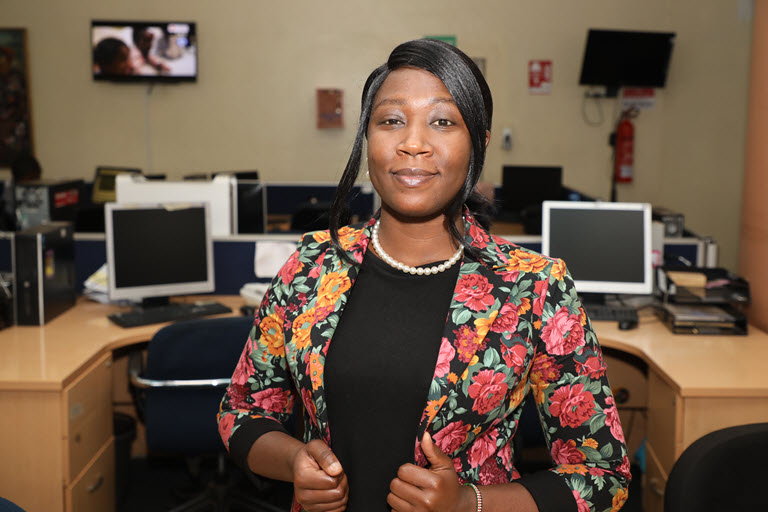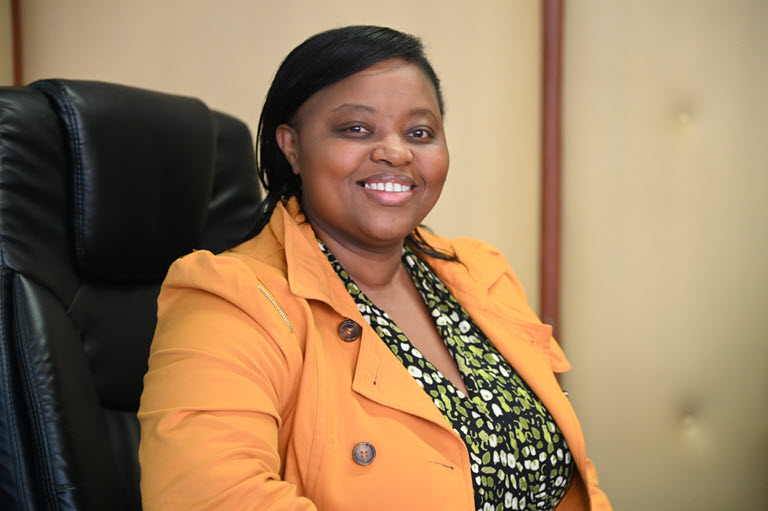Three students from the Aga Khan University Graduate School of Media and Communications recently graduated with Master of Arts degrees in Digital Journalism. Their theses dwelt on thematic areas in Kenya’s media landscape. Rebecca Mutiso looked at the place of solutions journalism in covering a crisis. At the same time, Crystal Onkeo delved into content analysis of the coverage of Covid-19 in the first seven days in Kenya. Last but not least, Anita Chepkoech looked at how media should deal with data smog.
EAST Site’s writer Isaac Swila spoke with them and now unpacks their findings.
Anita Chepkoech: ‘Journalists face mental problems due to data smog’
According to Anita, a print journalist with the Nation Media Group, media houses don’t take data smog – a euphemism that compares big data’s ability to overwhelm individuals and systems with the smoke and fog that pollutes the air in major cities – as a big thing.
“Media houses don’t take data smog as a big thing, and little has been done to mitigate the effects of data smog amongst journalists,” says Ms Chepokech, noting that this trend is not just limited to Kenya but at the international level too.
“In print media, the journalist tells the story, they go through volumes of data to discern what to feed the readers with, at the end of the day they go through a lot, and sadly, nothing is ever done,” Anita lamented.
“For them, they have to consume print media while the rest (broadcast journalists) can get away with allowing sources to explain phenomena. So, naturally, the victims are print journalists. Therefore, they endure a lot.”

To mitigate this, Anita challenges newsrooms to effectively manage data smog and ensure good quality stories are churned, more so in the digital age.
“Journalists are facing mental problems because of what they consume. They are zombies in a way, and there is a need to look at what an individual journalist can do. There is also a need for an understanding, not sacking. Newsrooms are now left with thinner staff to do lots of donkey work. So basically, there is a need to look at the mental capacity and what it takes.”
Anita also advocates using technology to help break down information and synthesise it for journalists if they are ‘to remain sane.’
“There’s also need to invest in re-training of journalists to use data management and visualisation tools like a spreadsheet to break down big data into concise and understandable stories,” she explained.
Rebecca Mutiso: ‘Solutions journalism is more than merely reporting a phenomenon’
Rebecca Mutiso is a veteran media practitioner who now works with the Media Council of Kenya as a manager in charge of accreditation and compliance. Her study discovered that only 15 percent of newspapers she studied had ‘a solutions perspective’ to the pandemic.
She blames this on low awareness of solutions journalism among Kenya’s journalists. “Solutions journalism is more than mere reporting of a phenomenon. It’s about identifying the solution and how it is replicated.”
Her study found that only 16 percent of journalists applied problem-solving in their articles, while 15 percent offered teachable lessons. A similar percentage of journalists provided content on gaps and limits.

Her study focused on the first two months from March 14, when the first case of Covid-19 was reported in Kenya.
Rebecca says that the way forward is to offer training and capacity building for journalists to report on solution journalism. But, at the same time, media houses need to go out there and find partners to help them attain this goal.
“There needs to be deliberate approach from media houses to embrace problem-solving approach rather than focusing on negatives. As much as it is our duty to point out the negatives, we also have a duty to point out the positives and offer solutions,” she argues, adding that there is a need for the media in Kenya to reconsider what is essential journalism and whether it’s enough to offer information by focusing on the crisis. “Journalists can do this is by infusing a solutions approach in their reportage, as in Kenya, there is low application of solutions journalism because journalists lack the necessary skills to practice it.”
Chrystal Onkeo: ‘The media put a concerted effort to spread the message on the risk of contagion’
Chrystal Onkeo researched on the framing of Covid-19 pandemic in the local newspapers. “This (Covid) was something new and would have brought a crisis if proper mechanism was not put in place,” Chrystal says. “Community spread was going to happen, the masses rely on media to understand the phenomenon, and communication became key,” this explains why it informed my study, she explains. “The media put a concerted effort to spread the message on the risk of contagion.”
According to her findings, newspapers generally focused on both in-depth coverage and analysis and a focus on hard news stories.
She, however, observes that there was minimal or lack of expert content. “Media actually focused on action, solutions, strategies, we saw lockdowns for instance, by the government, as measures to curb the contagion, whose consequences were quarantine.”
Chrystal believes that Kenyan media took their corporate social responsibility seriously in the face of heightened risks. She recommends that journalists should specialise in beats rather than being general reporters. This approach, she argues, is also beneficial to the media houses.

“Overall, the agenda was set (by the media), good framing, and the media did a good job,” she says. As a result, people were able to take the appropriate measures in the first seven days to protect themselves from infection and community spread, thus averting a health crisis.
However, the study established that while the print media succeeded in communicating the risk of contagion, the message was not the most prominent. This appears to align with the dialectics inherent in communicating risks and causing panic among the public.
Chrystal also recommends that the media have a strategy in their coverage to have in-depth articles as hard news stories. Media houses can achieve this by having a more deliberate process that involves specialised beat writers. Such a strategy, she notes, would enable the media to take on the role of educating the public with better analytical articles.
 Isaac Swila
Isaac SwilaReport by Aga Khan University’s Media Innovation Centre analyses the country’s millennials and digital natives’ media consumption habits.
For the media to flourish, and the society to have free flow of accurate and verifiable information, journalists, the drivers in the passing of information are expected to be well grounded in laws and the legal aspect pertaining to the job, writes Alfred Ganzo.
Pitching provides numerous opportunities for your new or existing business ideas to be discovered and realized; and as Simon Mtabazi writes, some startups have become billion-dollar companies due to efffevie pitches
The success you achieve with your media startup business will heavily rely on your reputation as a trustworthy company, and as Nandi Mwiyombella writes, it will also open a new window for customers and potential investors.
That’s why I think today is such a great space for us to sit back and reflect on the questions that could help us shape the kind of journalism that we want to see in our local and global community.
The report specifically analysed eight major variables which include: newsroom structure and resources, media ownership and business models, organisational capacity, innovation culture, journalism culture, financial trends and results, content quality and COVID-19.
Mudi, in her role as Media Council of Kenya regional coordinator in charge of Mombasa(covering the entire coastal region), has found herself at the forefront in advocating and fighting to protect journalists’ rights, culminating in her being awarded for her peace efforts in the run-up and during the 2022 general elections in Kenya.
The 2022 general elections have been mentally draining for journalists, some of whom have had to stay on the campaign trail for over a year. Others have had to toy with the tough call of managing teams in the newsroom. East Site’s Isaac Swila and political writer Rawlings Otieno recount their experiences
What role did social media influencers play in the election? What voice did they give in political discourses during and around the election period? And to what extent did political candidates involve the influencers in marketing their manifestos to sway votes in their favour? East Site writer Steven Omondi unpacks the details
The media industry is experiencing enormous transformation as new digital trends emerge. With the vast opportunities that the digital space offers, media owners and content producers must deliberately adapt to how the audience consumes content.
With the increased Digital Technology at the palm of just anybody; there are a lot of information that distort whether deliberately or not highlighting the need of robust Fact0checking as Asha D. Abinallah explains
Is there a danger in media personalities having a vibrant social media presence? Assuming they have a massive media following, should they self-regulate and filter what they post? And when they engage with followers, should their opinions be taken as personal, or does it represent the journalist’s media house? East Site writer Isaac Swila explores
Media stakeholders are raising concerns over the lack of gender-inclusive reporting in East African newsrooms. They want concerted efforts to ensure more female journalists get equal opportunities like their male counterparts.
The partnership will also ensure that local content is curated and distributed to better optimize the product and meet the needs of Kenyan online users.
The news industry is constantly changing, and in the last few years, User Generated Content (UGC) has become a ubiquitous feature in news sourcing and packaging. However, media houses and journalists need to establish verification and credibility safeguards to avoid the misinformation trap.
Reporting on elections is, for many journalists, an opportunity to establish themselves as reliable political reporters. But the task comes with certain risks, particularly in the East African sub-region.
Stakeholders are now calling for concerted efforts, better planning and preparations for journalists before they are sent out on the field to cover Kenya’s high-stakes August 9 General Elections.
East Africa’s media grapples with a myriad of challenges whenever general elections approach. Not only do editors struggle with balancing the competing political interests, at times at the altar of professionalism, but individual journalists pay dearly, many suffering attacks in the course of their duties.
As Form One students settle into a new life in secondary school, this has also been a period of reflection. We have read tear-jerking and heart-warming stories of determined students who overcame many odds to get an education and how well-wishers came together in their aid.
There is renewed optimism in the Tanzanian media space following the ascension to power of President Samia Suluhu whose regime is keen to relax some of the laws deemed punitive to journalists and media houses
Uganda fell behind, whereas Kenya improved its press freedom ranking in the Reporters Without Borders 2022 Press Freedom Index. And after years of media freedom decline, Tanzania appears to be on the right track. But overall, media freedom activists say there is still work to be done.
A free and independent press is the cornerstone of any democracy and the foundation of economic success, mostly because through our free press, we’re able to hold the leadership to account.
To align with the changing times and stay relevant in the business, media houses are challenged to rethink their strategy and to adopt and understand obstacles and challenges they face towards rethinking and exploring alternative sources of revenue and on developing the digital strategy.
A team of young, Tanzanian tech-savvy communication professionals is dreaming big. It seeks to usher a new dawn in media business management in Tanzania by optimising employee output and offering consultancy to media businesses on how they can operate with a minimal budget but still attain their goals.
Bloggers and influencers have become an integral component of information sourcing across East Africa. The public uses blogs, privately run websites and social networks to crowdsource information from social networks, which they then publish and distribute. But it’s not all rosy for this group of content makers.
The chances of meeting a medical graduate practising journalism are usually very slim, especially in Sub-Saharan Africa. But two Tanzanian physicians have broken away from that norm by inventing a start-up called Afyatoon. It uses visual art technology to tell compelling medical stories. They narrate to the EAST Site their experience and share their vision for the future.
Did you know that in 2021 Kenyans watched less TV and spent more time on social media? Or that some Kenyans rely on family, friends, or even social media icons and bloggers as a source of news and information? These are some of the conclusions highlighted in the 2021 State of the Media Survey conducted by the Media Council of Kenya (MCK).
The effects of the Covid pandemic continue to change the world in ways we had not imagined possible. The media is going through a painful transformation to keep up with changing production, distribution and consumption habits. In East Africa, Uganda’s Media Challenge Initiative (MCI) recently hosted a panel discussion on Media Viability comprising experienced journalists from Television, Radio, Print and Online/Digital media to address lessons learned from the pandemic. East Site’s Moses Mutente attended the panel and compiled this article.
In this commentary, Uganda-based journalist Caleb Okereke shares deep personal insights into why media schools in East Africa must rethink their curriculum. He stresses the need for trainers to begin teaching media ownership to better equip journalism students for the dynamic and cutthroat job market by taking us through his journey as a journalism student and media owner.
For the second year running, a survey commissioned by the Media Council of Kenya shows that the trust level in Kenyan media has nosedived, raising fundamental questions on how media will play its watchdog role more so with landmark elections set for August 9. EAST Site writer Isaac Swila explores.